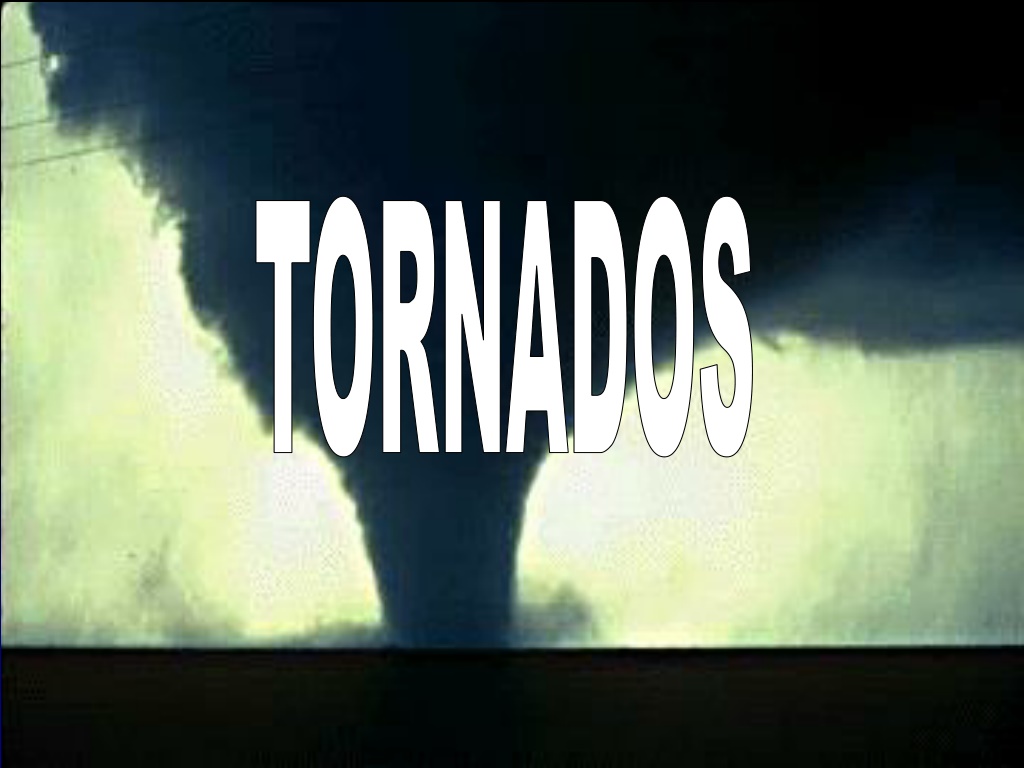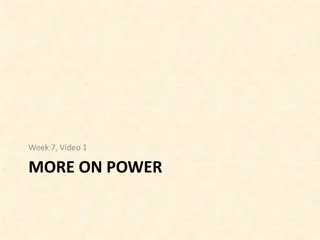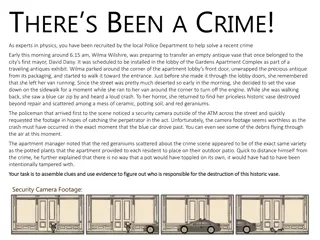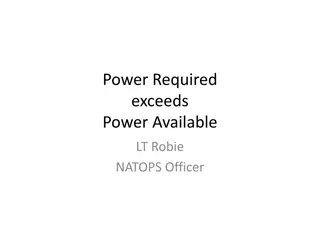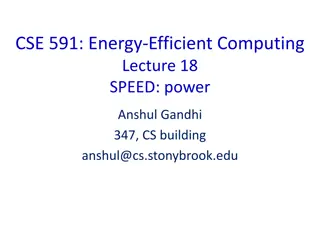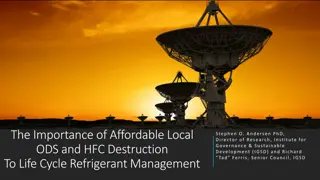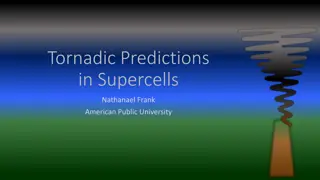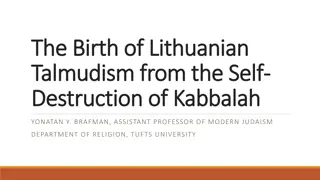Understanding Tornados: Power and Destruction Unveiled
Delve into the fascinating world of tornados, from their formation and strength on the Fujita Scale to the terrifying sound they produce. Learn about their impact, frequency, and the science behind these violent natural phenomena.
Download Presentation

Please find below an Image/Link to download the presentation.
The content on the website is provided AS IS for your information and personal use only. It may not be sold, licensed, or shared on other websites without obtaining consent from the author. Download presentation by click this link. If you encounter any issues during the download, it is possible that the publisher has removed the file from their server.
E N D
Presentation Transcript
Do Tornados Really Sound Like Freight Trains?? http://www.interaxs.net/pub/hgr/xenia_torn ado.mp3 What do you think after listening to the Xenia Tornado of April 3, 1974?
Winds can exceed 300 mph!!! Around 1,000 occur on average each year in the U.S. Kill 80, injure 1,500 people each year on average Can have a path up to a mile wide!!! Can occur any time of the year, but peak during the spring (March-June) Occur most frequently in the central U.S. in a region nicknamed Tornado Alley
What Exactly Is A Tornado? Violently rotating column of air (Vortex) extending from a thunderstorm to the ground
How Do They Form? Actually, no one knows for sure! But We have a pretty good idea
Step 1 Before a t-storm, a change in wind direction and an increase in speed forms an invisible, horizontal spinning effect in the lower atmosphere (at the base of the storm)
Step 2 Rising air within the t- storm (updrafts) tilts the rotating air from horizontal to vertical
Step 3 Vertical rotation now extends 2-6 miles up into the t-storm. Now a tornado may form and extend from this area of rotation to the ground.
Convection Demo Same basic principle behind a tornado vortex (funnel; column of fire in this case) Warm air moves up the vortex (updraft) Cools and sinks as it funnels out of the top (downdraft) The more air drawn in = faster and tighter spin This is called a convection cycle
How Strong Are Tornados? Strength is measured by the Fujita Scale... F0 = weakest, F5 = Strongest
Are Most Tornados Strong? All tornados are potentially deadly, but most are actually relatively weak (74%) ! Only 1% of all tornados fall in the F4 F5 range
Whats Up With Xenia, OH? Xenia has been the target of several major tornados down through the years Most recent: Sept. 2000 Most Notable: April 3, 1974
Sept. 2000 Damage Where do you think this Tornado ranked on the Fujita Scale?
April 3, 1974 Damage Where do you think this tornado ranked on the Fujita Scale?
Answers Sept. 2000 = F3-F4 (Severe/Devastating Damage; Winds of 200-260 mph) April 1974 = F5 (Incredible Damage; Winds of 260-300+ mph!!!)
Quick Review Are most tornados strong or weak? Which would cause more damage, an F1 or an F5 tornado? During which season do most tornados occur in the U.S.? What is the nickname of the region in the U.S. where many tornados occur? What is used to classify the intensity of tornados? Bonus**: How do experts think tornados form?
This powerpoint was kindly donated to www.worldofteaching.com http://www.worldofteaching.com is home to over a thousand powerpoints submitted by teachers. This is a completely free site and requires no registration. Please visit and I hope it will help in your teaching.
